It was Fafa who found out about Tsumugi’s 18-dish breakfast in Tokyo, which wasn’t surprising as the man has been obsessed with breakfast time and breakfast food ever since I knew him.
Shojin Ryori?
I have had Shojin Ryori (Japanese temple cuisine ━ a set menu based on Buddhism teaching) before, while staying in a temple lodging in Koyasan. I enjoyed it and was looking forward to eating it again. This time an 18-dish temple breakfast in Tokyo. I was also excited for Fafa to have his first Shojin Ryori ━ I wanted to know how he would like it since it was purely vegetarian.
Tsumugi cafe was located in the Tsukiji Outer Market Hustle and Bustle, where we planned to check out post-18-dish breakfast, making it another reason to brace a winter morning in Tokyo. (we did end up at the market in the late afternoon that day, but the visit was worth visiting for the 18-dish breakfast alone).
Tsumugi Cafe was located in conjunction with Tsukiji Hongan Temple.
The temple is also worth checking out, but I suggest doing it after breakfast, as Tsumugi tends to be at total capacity most days. You probably will need to queue, and they stop the breakfast at 11 AM and only provide 100+ 18-dish breakfast platters daily ━ we counted ourselves lucky when the waiter finally invited us to the table.
Temple-inspired 18-dish Breakfast Platter
We each ordered Tsumigi’s signature 18-dish breakfast for 1,800Y++. That’s when we learned it was not Shojin Ryori; it was only a temple-inspired breakfast, and it contained meat. But neither of us complained about it.
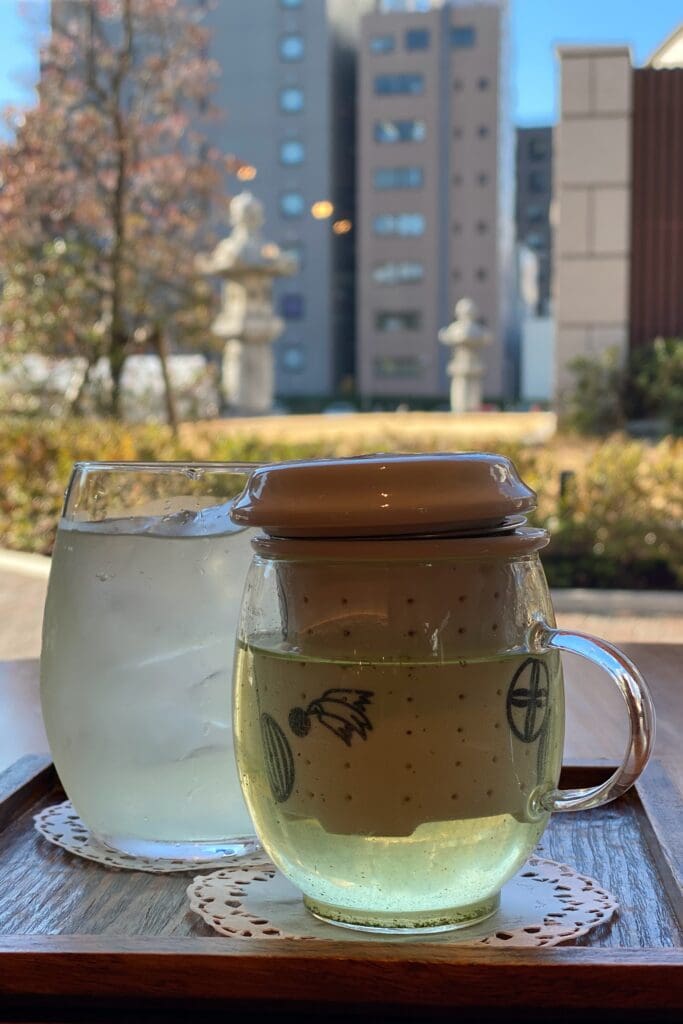
The set, accompanied by tea, came soon after. It was oh-so-beautiful! Also, even though it has 18 different dishes, each dish was served in a small portion. Therefore, it could easily be enjoyed in a bite or two. The tray was overlayed with paper featuring circles ━ with the dishes placed inside those circles. If you lift the plate, you will get to read the name of the dish both in Japanese and English.
Cafe tsumugi’s 18-dish breakfast Explained
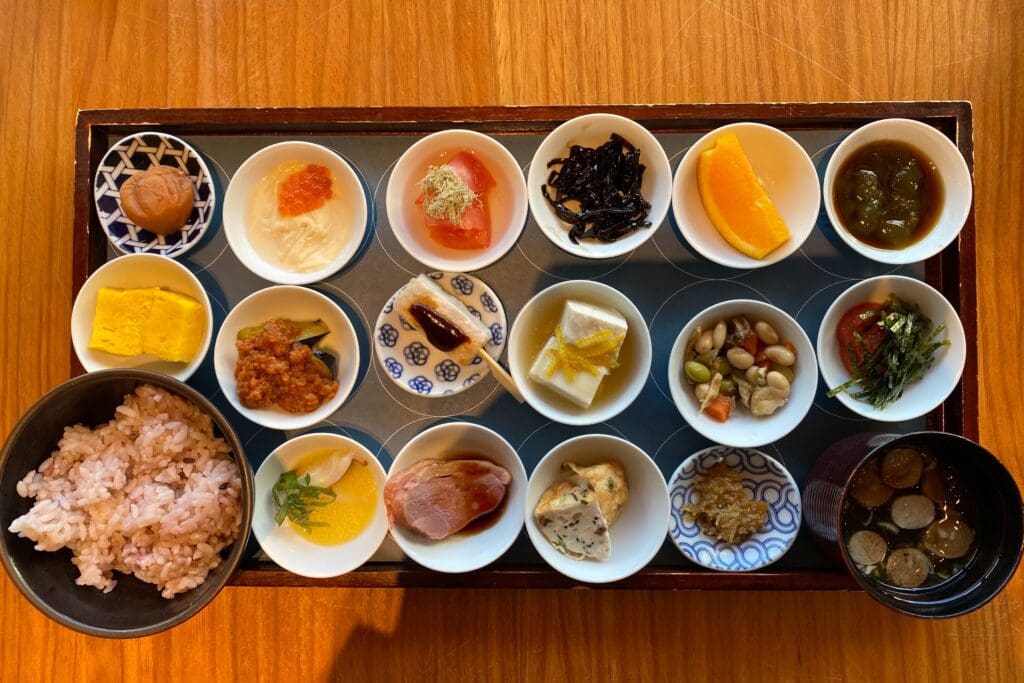
Top left-to-right: Umeboshi – Nanko pickled plum, Yuba Ikura – Salmon Roe, tomato with Dashi, seasonal fruits, Tsukiji Edoichi Sweet Kombu Tsukudani and Matcha jelly.
Middle left-to-right: Tamago – grilled egg, grilled Satoimo (Japanese taro) with miso paste, some kind of skewer (?), Tofu garnished with sliced grapefruits, seasonal side and Seaweed pollack roe.
Bottom left-to-right: a bowl of rice (we swapped the porridge on the menu with rice), Octopus Salad with Shio-Koji, roasted duck with Sansho pepper, Tsukiji Kibun – deep-fried fish cake, Jyako miso and Jakomiso and miso soup.
We both thoroughly enjoyed and polished off the 18-dish breakfast. It was delicious! My favourite was the Tsukiji Kibun Deep Fried Fish Cake, the first one I finished. Meanwhile, Fafa loved the ones that were pickled.
I have wondered whether I’d return for another platter of 18-dish breakfast. If it’s not Tokyo with its endless food choices, I have yet to discover; the answer would be yes! But since it’s Tokyo, I guess it’s a maybe. Maybe, if I go with Amma as I would love for her to be equally amazed by the 18-dish breakfast platter as we did on that day. Also, they use seasonal produce, so maybe I’ll get to eat a whole 18 new dishes. That would be awesome!
If you enjoy this post, read: Izakaya A Quintessential Part of Japanese Food Culture and 101 Japan Travel Checklist From Culture to Food.
Follow me on Instagram @KultureKween for more recent updates.
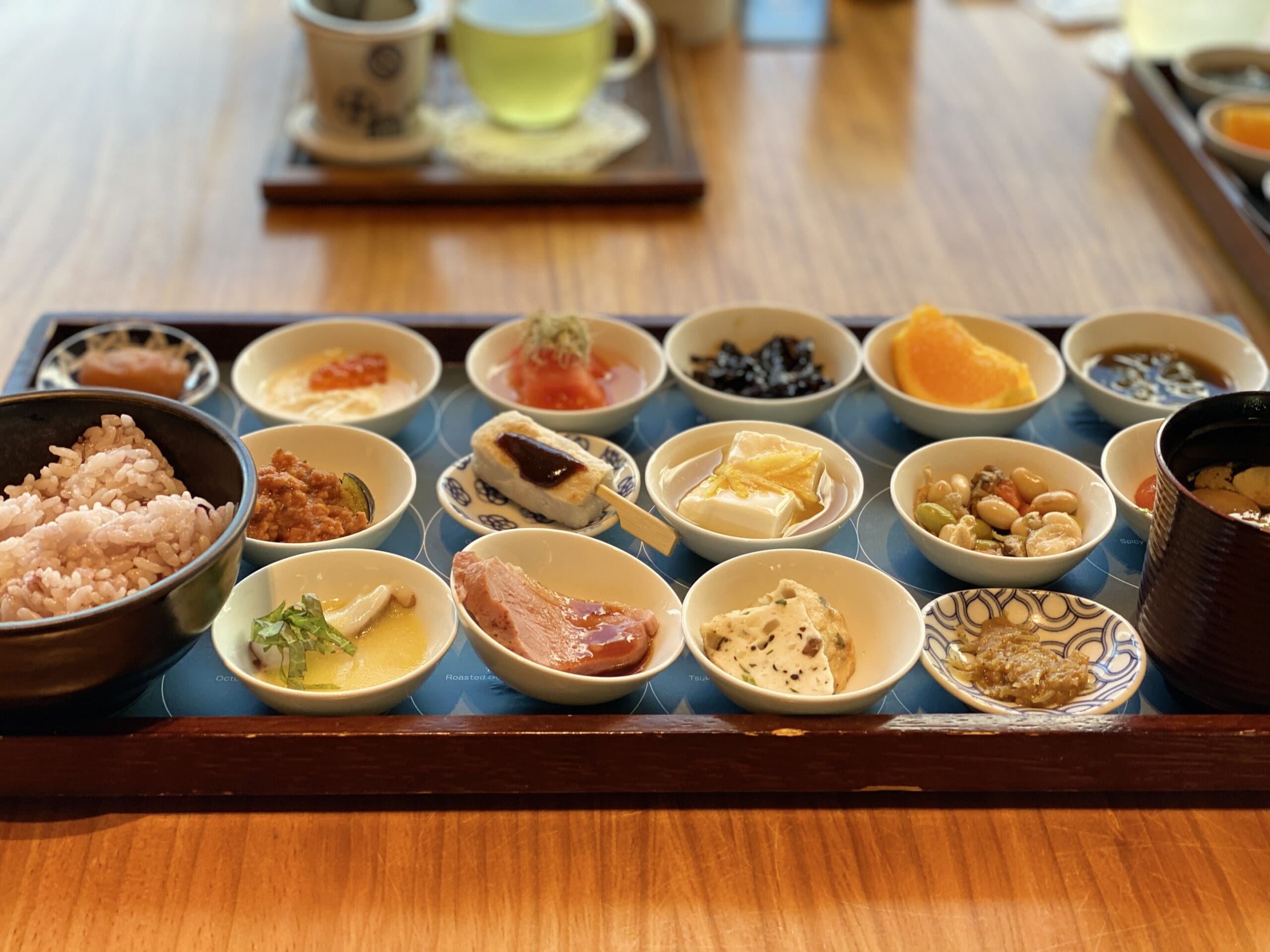
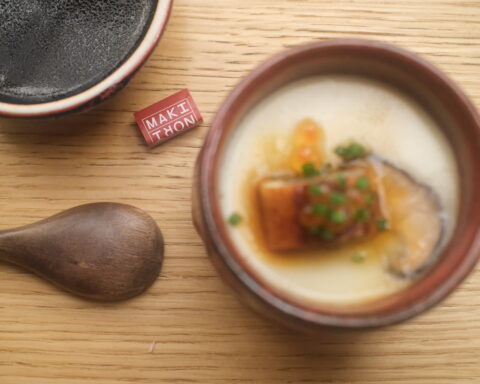
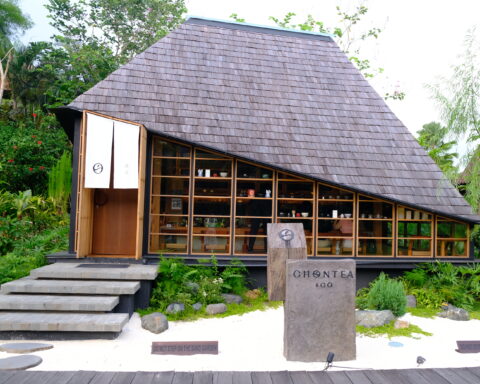
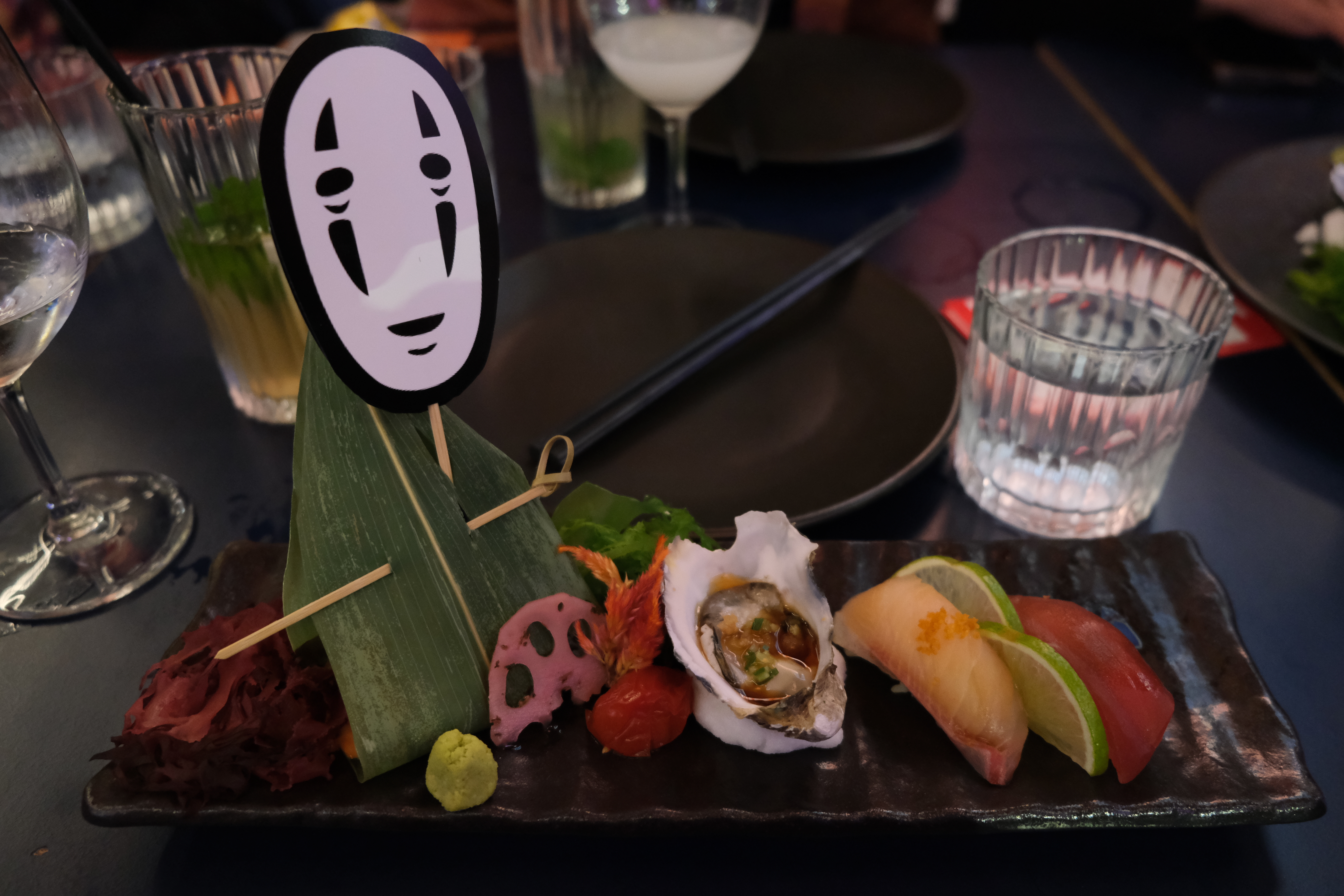
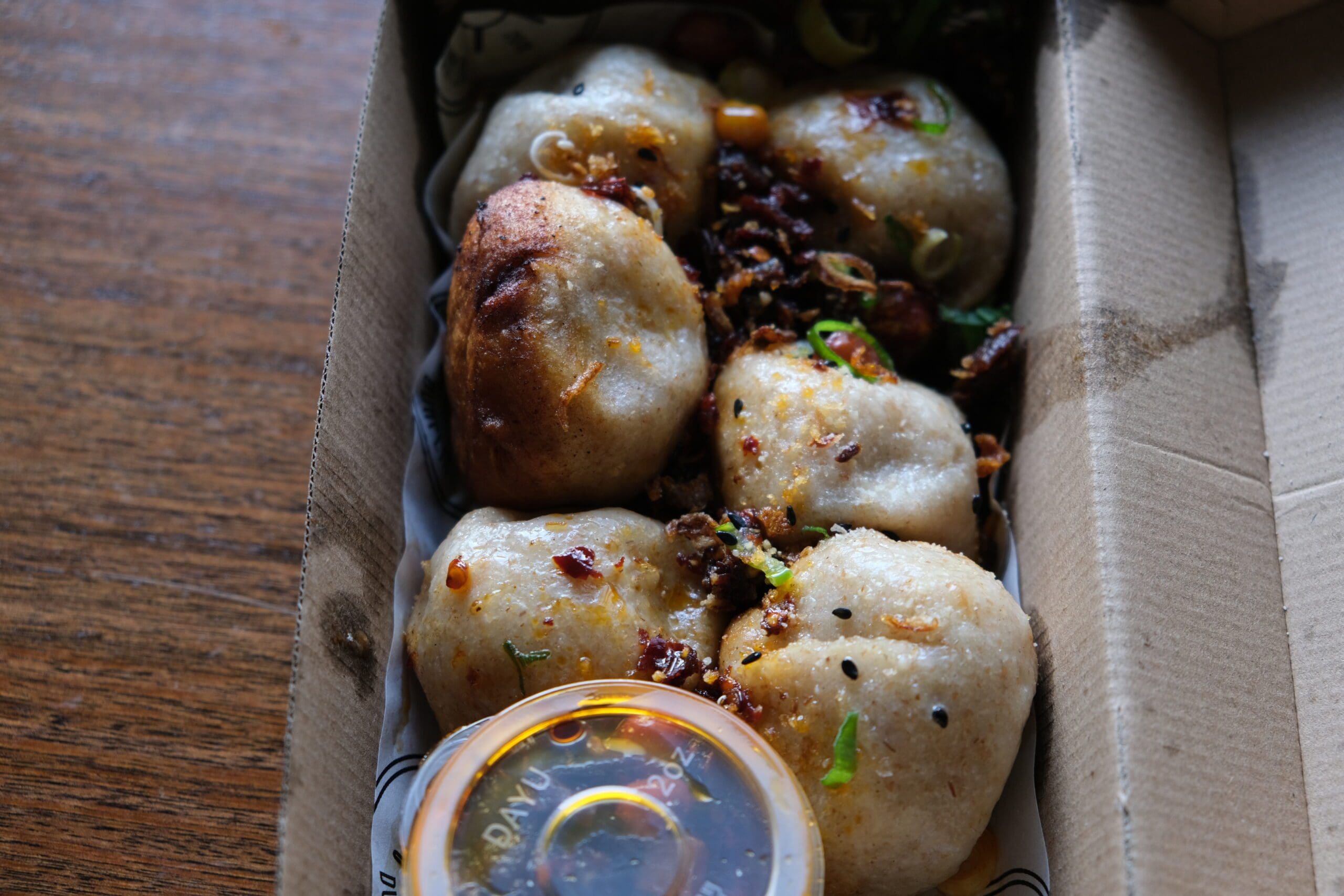
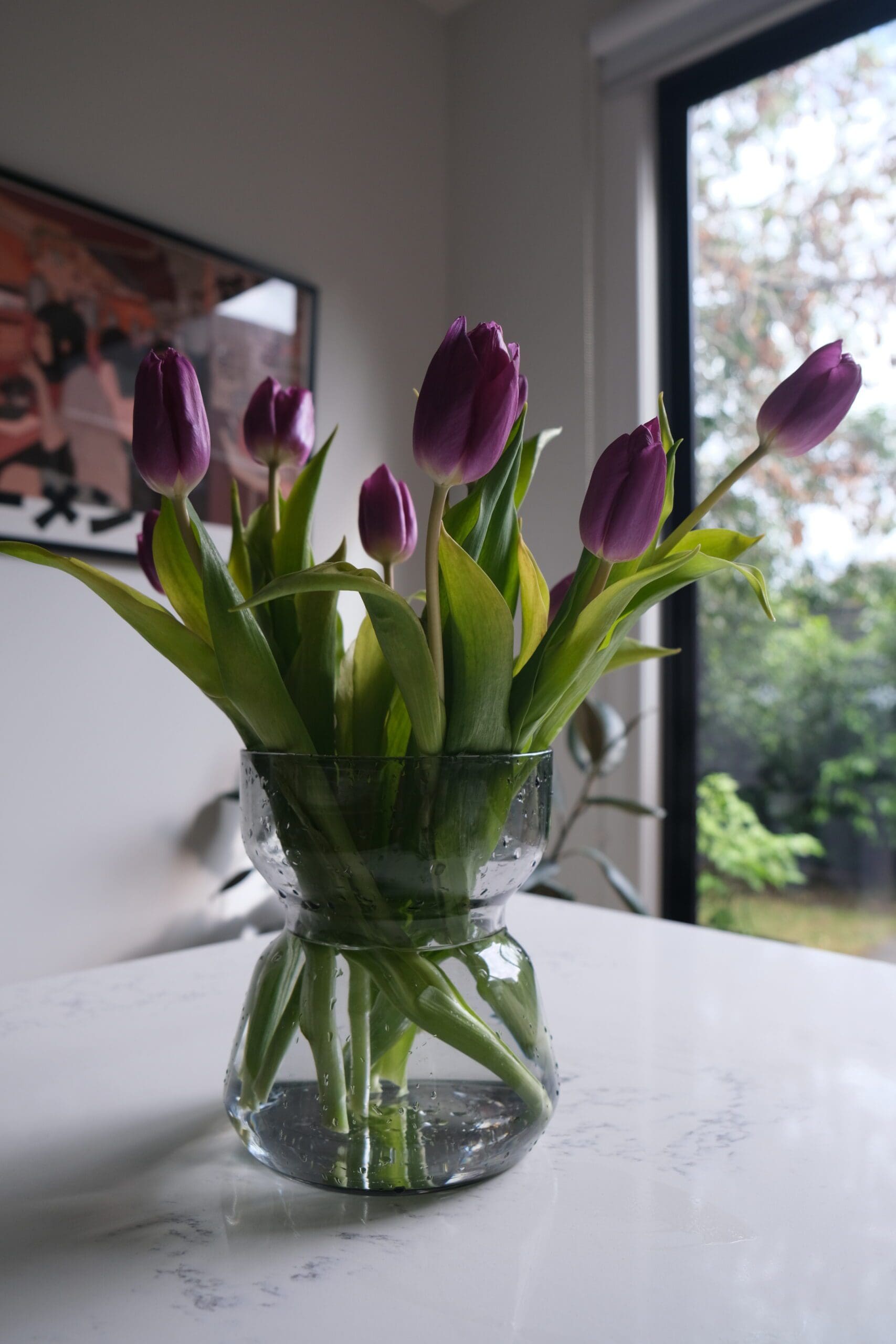
This is what I call temple food done right 😉
It’s not temple food Faaaaa